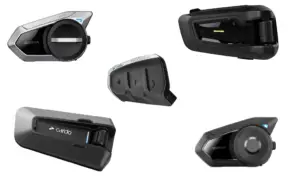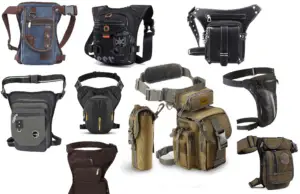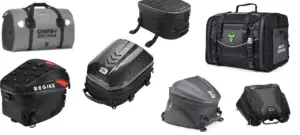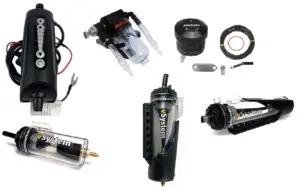Why did the motorcycle rider cross the road? To plan a trip on the other side! Jokes aside, traveling on a motorcycle is an exhilarating experience that offers freedom and adventure.
But before hitting the road, there are important considerations to ensure a safe and enjoyable journey. In this article, we’ll cover everything from planning your route and choosing the right motorcycle to packing and emergency preparedness.
So, whether you’re a seasoned rider or a beginner, let’s rev up and get started!
Contents
- Why Do you want to travel on a Motorcycle?
- How much does a motorcycle tour cost?
- How far should you go on your first motorcycle tour?
- How to plan a motorcycle trip?
- Assessing your experience for the roads before planning a tour
- Should I go alone or with my biker friends?
- Choosing the right motorcycle For Touring
- Importance of Proper Bike Maintenance Before the Tour
- How to find places to stay?
- How to Navigate on a motorcycle?
- Packing and gear
- Communication and emergency preparedness
- Conclusion
Why Do you want to travel on a Motorcycle?
I choose to travel on a motorcycle to experience the countryside, enjoy breathtaking scenery, and witness nature in all its glory.
Riding a motorcycle can take you to beautiful and remote locations that might not be accessible by other modes of transportation.
The sense of freedom that comes with traveling on a motorcycle is hard to beat, and it is a thrilling and rewarding experience.
You probably have your own reasons, but these ☝️ are mine.

How much does a motorcycle tour cost?
The cost of motorcycle touring relies on 3 major expenses. These are – fuel, accommodation, and food. Overall I use the following formula myself:
- Take your bike’s required fuel to ride the planned route.
- Add 20% for unexpected D-tours to be on the safe side.
- Multiply that number by the average price of fuel on your route
- One more time multiply it by 2 – this will cover the food and campsite costs
Example: My CB500X uses 3.5L/100km. My planned route is 4 thousand km. So I will calculate the total cost as follows: 4000*1.2/100*3.5L*1.6Eur*2=538 Eur.
I tend to stay in campsites and cook food myself. Also, I already have all the gear and my bike is serviced so this formula works well for me. Moreover, I always avoid paid roads and choose countryside back roads instead.
Fuel costs depend on your motorcycle, the distance traveled, and the price of gasoline in the region.
Accommodation costs depend on the type of lodging you choose, with camping being the most affordable option and hotels being the most expensive. Camping with your own tent costs 5-10 Eur per night in the camping with normal toilets. Always check camping rules in the country you are traveling through. For example, in Switzerland, you can get a 10 thousand euro fine for wild camping. 🤯
Food costs will depend on your eating habits and whether you choose to cook your own meals or dine out. For up to 2-week tours – I recommend taking food with you. I prefer taking lots of nuts (pecan and pistachios since they are very nutritious and calorie dance as well as have a long shelf life). Secondly, I cook my own food on the go using the portable stove. You can always buy and boil eggs and rice on the go.
Other expenses to consider include motorcycle maintenance and repairs, toll roads, ferries, and travel insurance.
Overall, the cost of motorcycle touring can be manageable with proper planning and budgeting, but it’s important to be aware of the potential expenses and plan accordingly to avoid any financial surprises.
How far should you go on your first motorcycle tour?
I suggest limiting your first tour to a maximum of three days, covering an average of 500-700 kilometers per day. This will give you a taste of sleeping in a tent and using a sleeping bag, and help you discover any gear or equipment issues you may have.
You may find the ground colder than anticipated and require a portable mattress. The goal is to evaluate your gear, equipment, navigation skills, and personal limitations.
Starting small and progressively pushing your limits is better than planning an extensive trip that never materializes due to feeling unprepared. As you gain more experience, you can embark on longer tours to increasingly remote destinations.
How to plan a motorcycle trip?
Typically, I generate a route using Google Maps and then search for campsites in the areas where I plan to stay. I also look for any noteworthy points of interest that I could explore. However, I tend to steer clear of large cities and instead prioritize natural environments. My passion lies in mountains and breathtaking scenery.
Assessing your experience for the roads before planning a tour
In most cases, you don’t have to bother if you plan to travel in Europe or USA on the normal asphalt or gravel roads. Your experience should be good enough if you have a driving license.
However, if you intend to engage in true off-roading, such as crossing rivers and venturing into low-populated remote areas, it is recommended to take your riding abilities in such challenging conditions into account.

Should I go alone or with my biker friends?
The decision to travel alone or with biker friends depends on your personal preferences and the nature of your trip.
If you value independence and want to have complete control over your itinerary and pace, traveling alone may be the best option for you. You can design your trip to suit your interests and explore at your own leisure without worrying about the needs and preferences of others.
On the other hand, traveling with biker friends is a rewarding experience. It offers an opportunity to share the adventure with others and create lasting memories together. You can also rely on each other for support, safety, and assistance in case of any problems.
Initially, I was afraid to travel solo as my mind was preoccupied with worries about potential mishaps like a tire puncture, and I wasn’t sure how to handle it. This mental burden had the potential to spoil my trip, so I decided to travel with a group of biker friends, which turned out to be the right decision at the time.
However, now I prefer traveling alone and find it to be the most enjoyable option. With no constraints, I can wake up as early as 5 am, pack my things, and hit the road without waiting for anyone. I can stop as frequently or as infrequently as I please, and make all the decisions myself, allowing me to travel further and relish the journey even more.
Choosing the right motorcycle For Touring
You will probably use whatever motorcycle you currently own. The most valuable touring motorcycle features include Comfort, Reliability, 180mm or larger ground clearance, a tank range of 400+ km, and decent suspension with good dampening and travel as well as electronic gizmos like cruise control.
Good thing is that many of these features may be added with aftermarket accessories.
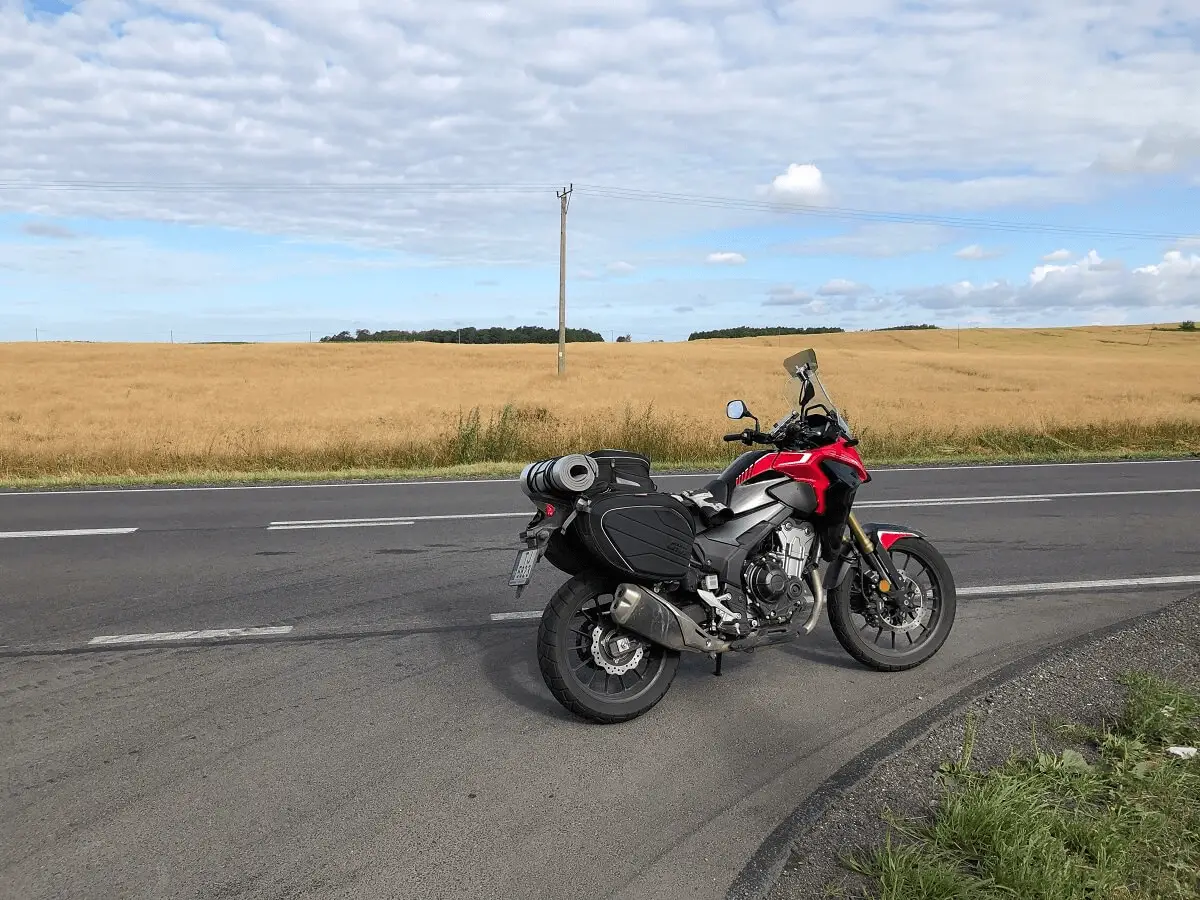
Comfort in a motorcycle consists of 3 main factors:
#1 Ergonomics – must be suitable for your body type. There should be enough leg room, the sitting position should be upright and arms should relax on the handlebar instead of supporting your weight. Use handlebar raisers and lower footpegs if you need more space in the cockpit.
#2 Weather Protection – Your bike should have fairing to protect your legs, chest, and helmet from the ongoing wind. A larger windshield may improve weather protection in the chest and helmet area.
#3 Vibrations – motorcycle should work smoothly without high-frequency vibrations on the handlebar, footpegs, or seat.
Valuable Motorcycle Touring Features
#4 Tank Range – 400 km is my personal minimum. Of course, you can travel with less, there are fuel stations everywhere. I tend to refuel every 250 km and don’t like to ride into the unknown if I have less than 150 km left in the tank.
#5 Cruise Control – will further improve comfort helping you to decrease fatigue and keep your attention on the road ahead instead of constantly checking the speedometer. smaller chance of getting sped tickets. If your bike does not come with cruise control – use a throttle lock, it is not as convenient but still good.
#6 Ground Clearance – 180mm of ground clearance will allow you to ride on gravel roads or a little bit offroad with a lesser risk of damaging the engine sump.
#7 Suspension – suspension travel of at least 160mm is considered good for traversing poorly paved or gravel roads with reasonable comfort. It’s also crucial to have good damping, as cheaper shock internals with limited damping range will cause the suspension to either overreact or underreact to bumps, rendering it ineffective
#8 Engine Power and Character – As an individual, I prefer engines with low-end torque to allow me to cruise at 90 Kph with less than 3500 rpm in 6th gear. Engine power is not a major concern for me, and 45 horsepower is sufficient for my needs. Moreover, higher horsepower tends to increase fuel consumption, which results in a smaller per-tank range. Typically, I ride between 50-110 km/h, and I do not require that much power in any case.
#9 Weight – Weight is not as crucial on paved and gravel roads but becomes increasingly important when venturing off-road.
It’s important to note that loading your bike for a tour will affect its handling. You should strive to load heavy items as close to the center of mass as possible and keep the load as low as possible to ensure optimal handling.
Importance of Proper Bike Maintenance Before the Tour
Servicing your bike before going on a tour is cheaper and easier. Check all main consumables like the chain, sprockets, oil, air filter, spark plugs, tires, and brake pads before the tour, and replace them if needed. Neglecting these parts may cause a costly headache down the road, especially in an unknown location.
How to find places to stay?
To find nearby campsites, I use the “camp4night” application on my phone. For trips that are less than a week-long, I plan ahead by checking for 20 campsites along my route every 100-150 km using Google Maps. I make sure to write down the addresses so that I can easily locate a place to stay for the night within a couple of hours’ reach at any given time.
I rely on the Waze navigation app on my phone during my rides. To do so, I mount my phone onto the handlebar and plug it into the USB charging socket in the cockpit. This setup works perfectly for me.
Packing and gear
The main challenge is to balance your desire for comfort with your need to pack light. My personal goal is to pack as many comfort-boosting things while making my luggage below the 15 kg mark. Here are some items that are always with me:
- Tent (2-person) – Slightly larger tent so I can put all my gear and valuable items inside the tent for the night.
- Sleeping Bag – Mine rates to be usable up to -5°C which makes it comfortable if the temperature falls to around 10°C in the night
- Pumpable mattress – ground temp is usually cold so additional insulation in form of a mattress adds a lot of comfort to sleeping in a tent.
- Rain Suit – Doubles as warm clothes when the temperature drops below 10°C. Provides a lot of additional insulation to my summer/spring jacket making riding in the cold weather a lot more enjoyable and safe. Here is my rain suit comparison.
- Portable Stove – This allows boiling water to make coffee in the morning as well as boiling eggs which I will eat for breakfast and throughout the day as my protein source. 🥚🥚🥚 Here is my Portable Stove Review.
- Tire repair Kit and basic tools – I bring basic tools to adjust the motorcycle chain and repair tubeless tire punctures. Also, I bring the portable air pump that actually doubles as a powerbank and a flashlight.
Note: Sleeping bag should be stored in a waterproof bag for obvious reasons.

Communication and emergency preparedness
When going to remote locations, make sure to bring a reliable communication device.
Pack essential emergency supplies such as a first aid kit, water, headache pills, and medication for stomach problems.
Share the trip route with friends and family members so that they can alert the authorities in case of an emergency. Keep cash in the internal pocket of your jacket and ask friends in advance if they can send you money in case of an unlikely emergency.
Conclusion
Motorcycle touring offers an exciting opportunity to experience freedom, adventure, and breathtaking scenery.
However, it is essential to consider safety, budget, and personal preferences before embarking on a trip.
Planning the route, packing the necessary gear, and budgeting for fuel, accommodation and food are critical factors that can make or break the journey.
Limiting the first trip to a maximum of three days and progressively pushing the limits is wise way for novice riders.
Ultimately, whether to travel alone or with biker friends depends on individual preferences, but safety, enjoyment, and creating lasting memories should always be prioritized.
